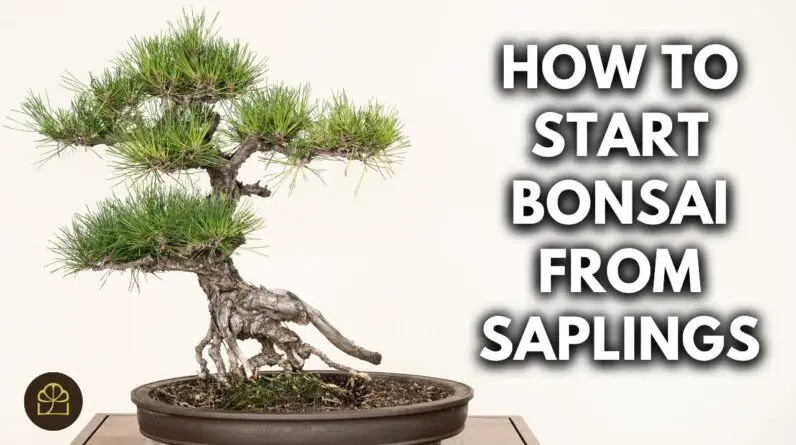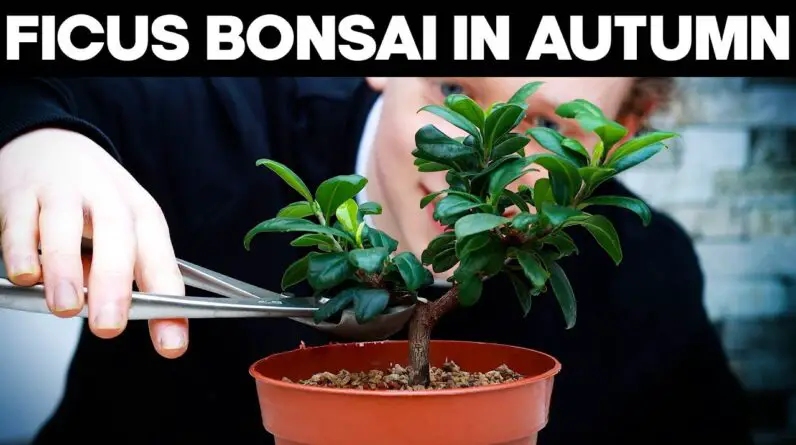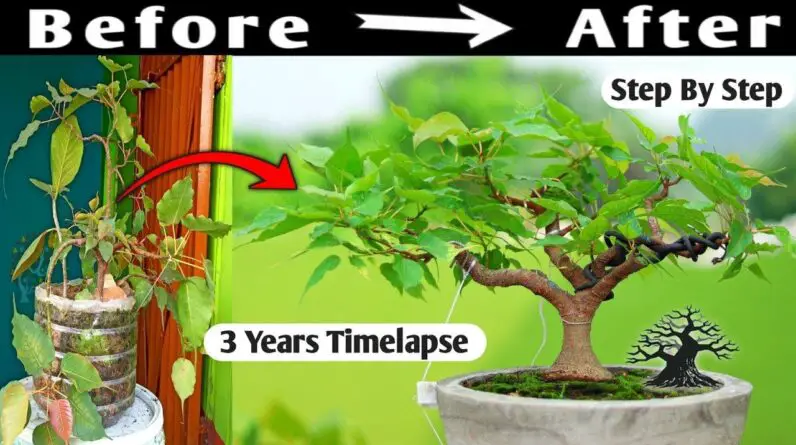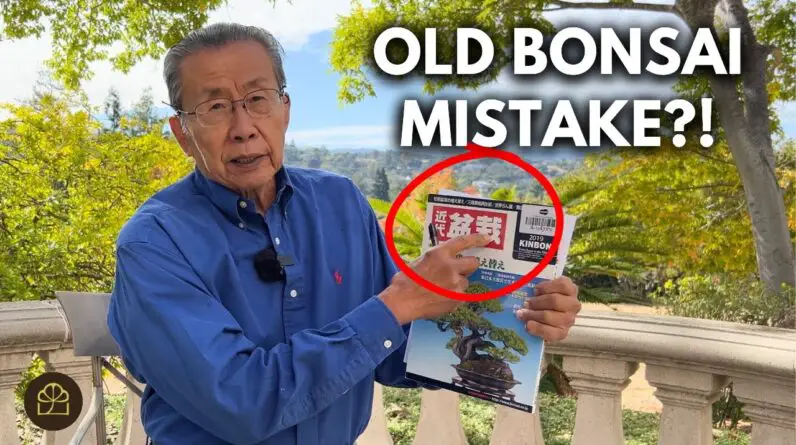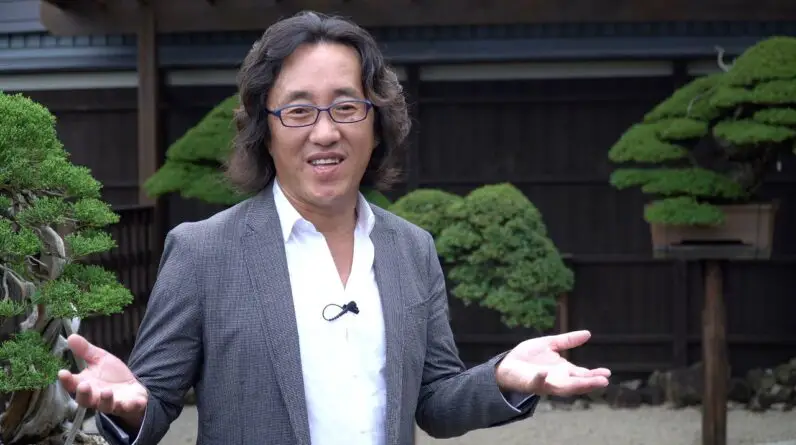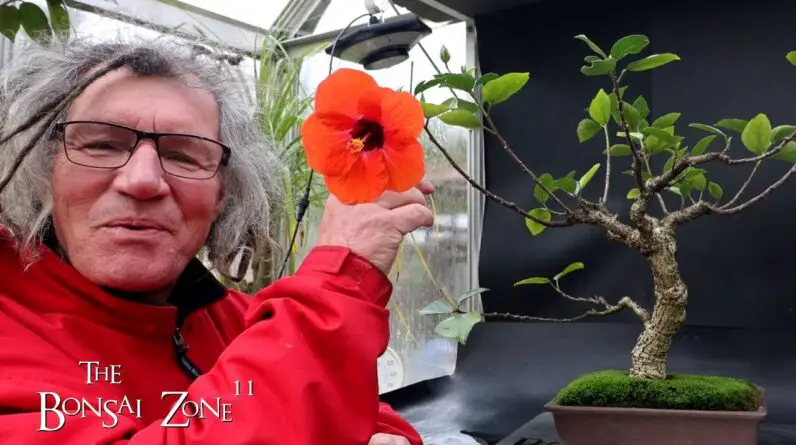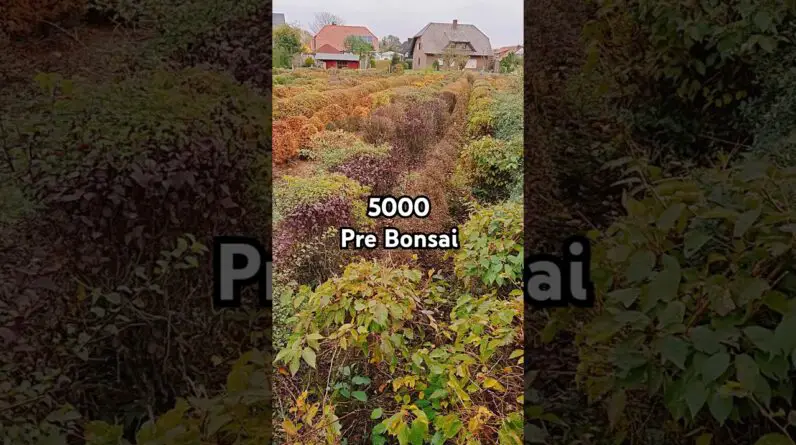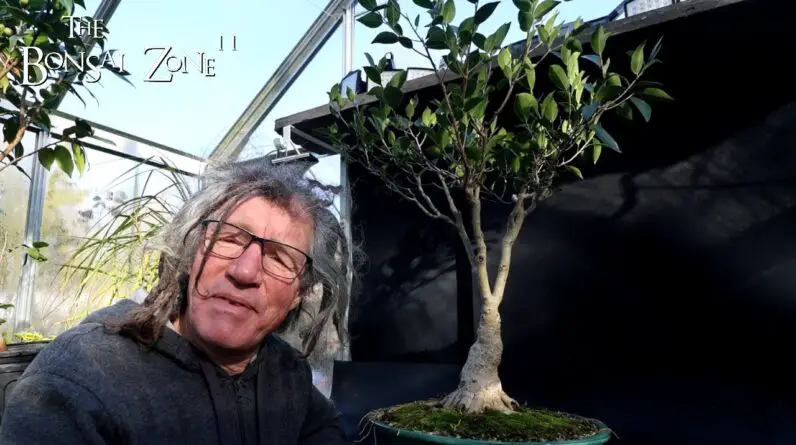Want to learn how to make an Apple bonsai tree? In this video by Bonsai Realm, they show you just how to prune and wire an Apple tree that is around 15 years of ages. The video clip was shot during autumn, when the tree was loaded with little apple trees.
Bonsai Empire is passionate about sharing the living art of Bonsai and produced this DIY tutorial to assist and influence beginners. This video clip is part of their on the internet programs, yet they supply numerous various other totally free videos as well.
So if you’re interested in finding out more regarding Bonsai methods, head over to Bonsai Realm’s internet site!
In the video clip, they describe the process of pruning and electrical wiring this Apple bonsai tree. They make use of little pruning shears, pliers, and cable cutters. The top branch is the first to be cut, and then they concentrate on 2 thicker branches to attain the desired silhouette.
They show the significance of a 360-degree strategy when cutting and electrical wiring to stay clear of any dead angles. After the trimming and circuitry, the tree looks a lot more refined and well balanced. With regular maintenance, this tree will remain to thrive and grow brand-new branches in the upcoming spring. If you wish to learn more concerning trimming, wiring, and repotting techniques, consider signing up with Bonsai Realm’s online training courses and access to specialist assistance and the possibility to ask the instructors concerns straight.
Apple Bonsai Tree: An Intro
Welcome to the globe of apple bonsai trees! Creating and cultivating a miniature apple tree can be a satisfying and meeting pastime. Not just do these bonsai trees supply a stunning visual, but they likewise provide the opportunity to expand your very own fruits in a tiny and workable space.
In this extensive article, we will certainly assist you via the procedure of picking the best apple tree selection, gathering the required materials, expanding the tree from seeds, trimming and electrical wiring methods, proper upkeep, potting considerations, and the distinctions between outdoor and indoor apple bonsai trees.
Take into consideration the Dimension of the Bonsai
When choosing an apple tree selection for bonsai cultivation, it is essential to take into consideration the supreme dimension of the tree. Since bonsai trees are meant to be small variations of their larger counterparts, choosing a variety that normally remains small is essential. Search for apple tree varieties that are known for their portable growth and smaller stature, such as columnar apple trees or naturally dwarf selections. This will certainly make sure that your bonsai remains symmetrical and is less complicated to manage.
Pick a Crab Apple Tree Variety
Crab apple trees, with their little and vivid fruits, are often the preferred selection for apple bonsai farming. These trees normally have much more delicate and proportional attributes, making them fit for bonsai aesthetic appeal. In addition, crab apple trees are durable and adaptable, making them easier to look after and keep as bonsai specimens. Take into consideration ranges such as Malus sylvestris or Malus floribunda, which are generally utilized in bonsai cultivation.
Consider the Environment and Location
Before choosing the apple tree range for your bonsai, it is very important to think about the environment and place where you prepare to grow it. Various apple tree varieties thrive in different climates, so select a selection that is fit to your specific area. Additionally, bear in mind the quantity of sunshine and temperature requirements of the chosen variety. The majority of apple trees need full sunlight to grow, so make certain that your selected area supplies enough sunshine throughout the day.
Select a Suitable Bonsai Pot
Picking the right bonsai pot is important for the health and appearances of your apple bonsai tree. Try to find a pot that is proportionate to the dimension of your tree and matches its general style. Bonsai pots are available in various products such as ceramic, plastic, or clay. Each product has its own advantages and considerations, so pick one that matches your personal choices and the particular requirements of your apple bonsai tree.
Obtain Top Quality Bonsai Soil
Top notch bonsai dirt is crucial for the healthy development of your apple bonsai tree. The soil ought to provide adequate drainage while retaining sufficient moisture for the tree’s roots. You can acquire pre-made bonsai dirt mixes that are especially designed for bonsai cultivation, or you can produce your own mix by incorporating components such as Akadama, pumice, and lava rock. Experimentation with different soil mixtures might be necessary to discover the excellent equilibrium for your apple bonsai tree.
Get Trimming and Wiring Devices
Trimming and wiring are vital techniques for forming and maintaining the type of your apple bonsai tree. To properly trim and wire your bonsai, you will need a collection of correct devices. Some essential tools include a concave branch cutter for exact trimming, bonsai cable cutters for taking care of the wire, and pliers or tweezers for detailed work. Invest in high-grade tools to ensure accuracy and minimize damage to your apple bonsai tree.
Collecting Apple Seeds
One of the most gratifying methods to begin an apple bonsai tree is by expanding it from seeds. You can gather apple seeds from ripe fruits or acquire them from trusted vendors. Make sure that the seeds are fresh and sensible for the very best opportunities of germination.
Preparation of Seeds for Planting
Prior to growing the apple seeds, it is very important to prepare them for optimal germination. Begin by soaking the seeds in water for 24 hours to soften the external seed layer. After soaking, get rid of the seeds from the water and allow them to completely dry for a couple of days. This process helps break the seed’s inactivity and increases the opportunities of successful germination.
Growing and Germination Refine
Once the seeds are prepared, plant them in little pots filled with well-draining bonsai soil. Location the pots in a cozy and warm place, and maintain the dirt regularly moist. Germination commonly takes about 2 to 4 weeks, depending upon the range and environmental conditions. As soon as the plants have sprouted, pick the healthiest ones to continue expanding as your future apple bonsai trees.
Understanding Trimming Methods
Pruning is an important aspect of bonsai farming that aids keep the tree’s size, form, and overall appearances. By uniquely removing branches and foliage, you can accomplish the desired form and balance. Find out about different trimming techniques such as maintenance pruning, branch trimming, and pinching to preserve the health and form of your apple bonsai tree.
Determining the Right Branches to Prune
When trimming your apple bonsai tree, it is necessary to identify the branches that need to be trimmed. Try to find branches that disrupt the wanted kind or prevent the tree’s total equilibrium. Remove any dead, harmed, or undesirable branches to promote healthy growth and avoid condition. Get in touch with bonsai resources or look for assistance from seasoned bonsai enthusiasts if you’re unsure which branches to trim.
Trimming to Accomplish Preferred Shape
Trimming is not just concerning maintenance but also regarding shaping your apple bonsai tree. Use pruning strategies to guide the tree’s development and attain the desired form and style. Consider standard bonsai forms such as formal upright, inclining, or cascade, and adjust them to suit the features of your apple bonsai tree.
Preparing the Tree for Wiring
Electrical wiring is another important method in bonsai growing that assists produce and keep the wanted shape and structure of your apple bonsai tree. Before using cables, guarantee that the branches and trunk are flexible adequate to be controlled without creating damages. Younger branches are a lot more versatile and simpler to wire, while older branches might require progressive flexing with time.
Choosing the Right Cord Dimension
Selecting the proper wire dimension is vital to stay clear of harming the branches of your apple bonsai tree. The cable must be solid enough to hold the wanted shape without cutting into the bark. Choose a wire dimension that is roughly one-third of the density of the branch being wired. Copper or aluminum cord is frequently made use of, however make sure it is soft enough to be conveniently shaped.
Applying Circuitry Techniques
To wire your apple bonsai tree, begin by covering the cable at the base of the branch or trunk and then gently spiral it upwards, making sure to preserve a 45-degree angle in between the wire and the branch. Beware not to cover the cable too firmly, as it can limit the tree’s circulation and trigger damages. As soon as the desired shape is achieved, protect the cable by turning completions together or utilizing cord clips. Remove the wire after a couple of months to stop it from cutting into the bark.
Watering and Wetness Control
Correct watering is critical for the health and vitality of your apple bonsai tree. The regularity and quantity of water needed rely on numerous factors such as the climate, pot dimension, and tree’s development phase. Water your apple bonsai tree when the leading inch of dirt feels dry, ensuring that the water gets to the whole origin system. Avoid overwatering, as it can lead to root rot and various other fungal conditions.
Fertilizing and Nutrient Demands
Preserving soil fertility is crucial for the healthy development of your apple bonsai tree. Use a balanced fertilizer throughout the growing period to offer the required nutrients for optimum growth. Usage organic or slow-release plant foods especially created for bonsai trees, following the recommended dosage guidelines. Frequently keep an eye on the tree’s reaction to fertilization and change the feeding program as necessary.
Parasite and Disease Management
Like any other plant, apple bonsai trees can be vulnerable to various insects and conditions. Frequently inspect your tree for signs of infestation, such as tarnished fallen leaves, parasites, or abnormal development. If any type of issues are discovered, promptly take suitable procedures to manage and get rid of the trouble. Consider using natural bug control methods or talk to professionals if needed.
Repotting Regularity and Timing
Repotting is a vital task in bonsai farming that enables root system health and wellness and general development control. The frequency and timing of repotting rely on different variables such as the age and development price of the apple bonsai tree. As a basic guideline, repotting is normally done every 2 to 3 years, ideally throughout the early spring before the tree starts actively growing.
Picking a Correct Bonsai Pot
When repotting your apple bonsai tree, pick a new pot that is slightly larger than the existing one. Take into consideration the looks and overall equilibrium of the tree when choosing the pot’s form and style. Ensure that the pot gives ample drain holes and is made from a product that is suitable for bonsai farming.
Transplanting and Root Trimming
Throughout repotting, carefully eliminate the tree from its current pot and carefully loosen the origin round. Inspect the origins and trim any type of damaged or excessively lengthy roots. This procedure, known as origin pruning, helps promote new origin development and keeps the tree’s root system compact. After origin trimming, put the tree in the new pot, guaranteeing that the roots are uniformly distributed and covered with fresh bonsai soil.
Correct Potting Strategies
When potting your apple bonsai tree, usage appropriate methods to guarantee its stability and healthy and balanced development. Position the tree slightly off-center in the pot to create a sense of activity and balance. Secure the tree in position utilizing bonsai cords or rocks, and fill up the continuing to be room in the pot with bonsai soil, making certain that no air pockets are left. Water the fresh potted tree thoroughly and monitor its recuperation during the following weeks.
Benefits and Factors To Consider for Outdoor Bonsai
Expanding an exterior apple bonsai tree allows it to experience the natural altering seasons, which can enhance its overall beauty. Outdoor bonsai trees generally have more space to grow and develop a stronger root system. However, outdoor bonsai trees require careful consideration of climate and weather conditions, protection from extreme temperature fluctuations, and regular exposure to sunlight.
Benefits and Challenges of Indoor Bonsai
Growing an apple bonsai tree indoors provides more controlled conditions and allows enthusiasts in colder climates to enjoy bonsai cultivation year-round. Indoor bonsai trees require careful attention to temperature, humidity, and lighting conditions. Supplemental lighting may be necessary, especially during the winter months when sunlight exposure is limited. Additionally, indoor bonsai trees may require more vigilant pest and disease management due to the controlled environment.
Creating and caring for an apple bonsai tree is a rewarding and fulfilling endeavor. With proper knowledge and techniques, you can enjoy the beauty of nature in a miniature form and even grow your own miniature apples.
By choosing the right variety, gathering the necessary materials, mastering pruning and wiring techniques, maintaining proper care, and selecting the right pot and location, you can cultivate a stunning apple bonsai tree that brings joy and tranquility to your surroundings.
Happy bonsai cultivation!
[sspostsincat category=”What Is The Most Expensive Bonsai Tree”]


